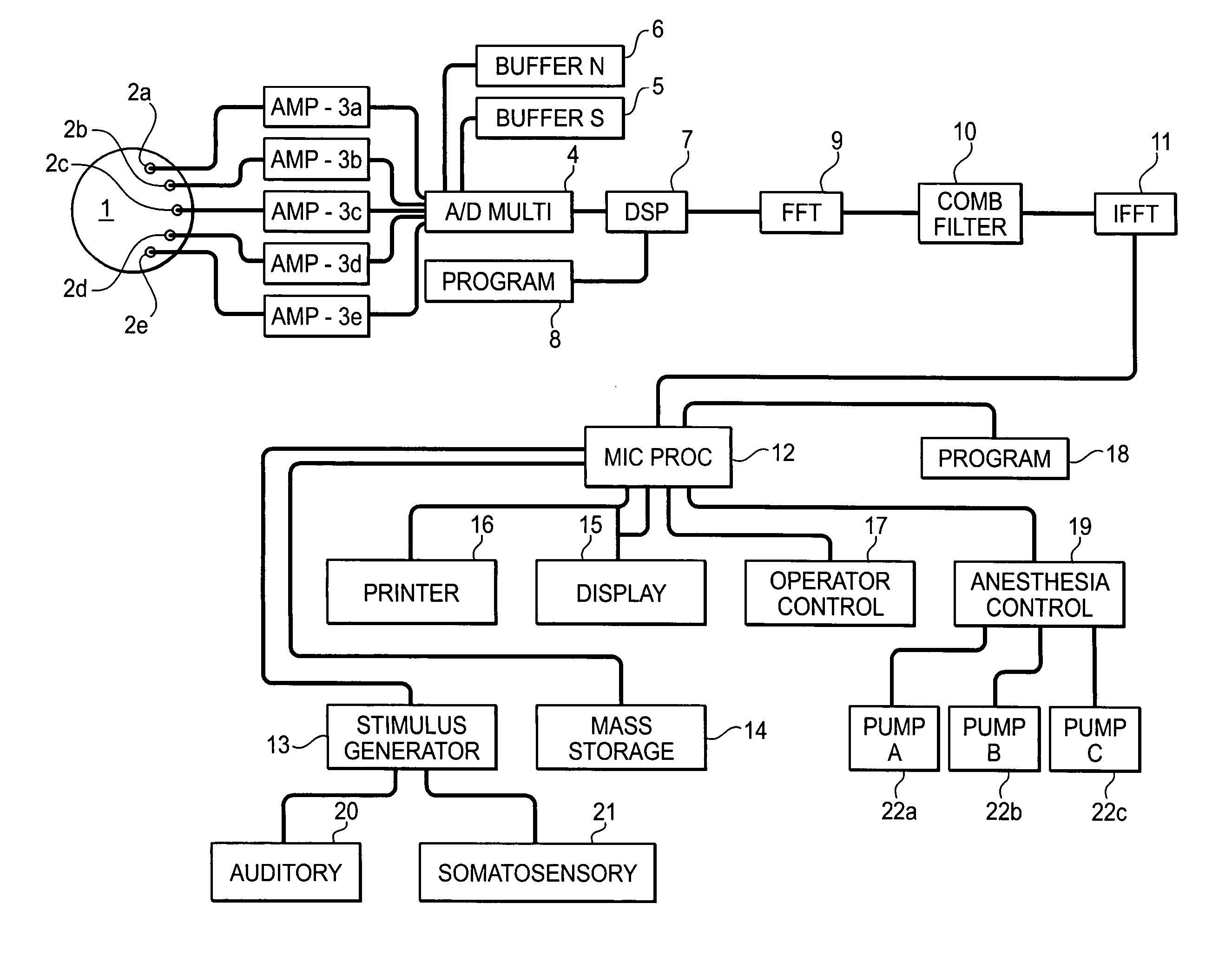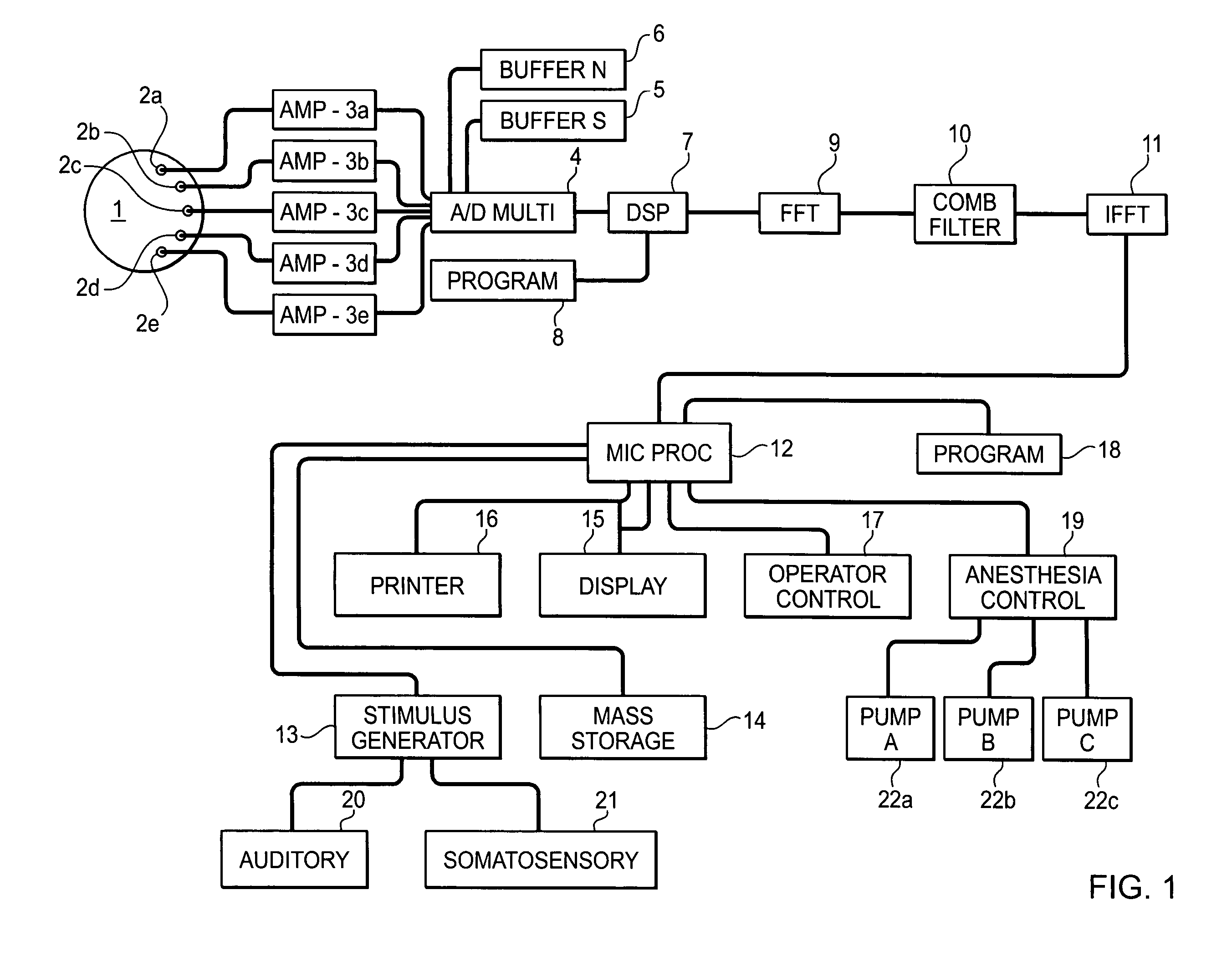System and method for guidance of anesthesia, analgesia and amnesia
a technology of anesthesia and analgesia, applied in the field of medical systems and methods, can solve the problems of patient loss of consciousness, affecting the sensation at the region to which it is applied, and progressing depression of the central nervous system
- Summary
- Abstract
- Description
- Claims
- Application Information
AI Technical Summary
Benefits of technology
Problems solved by technology
Method used
Image
Examples
Embodiment Construction
[0016]The present invention utilizes electrophysiological methods to provide automatic quantitative evaluation separately for a level of awareness (sedation), a sensitivity to pain and / or an ability to comprehend auditory speech and store memories of intraoperative or environmental events. This information may be provided as a monitor to aid an anesthesiologist in the management of an individual patient or may be used as an input to a servo system which automatically delivers anesthetic, analgesic and amnesic agents to optimize the state of a patient. In particular, before an operation, the anesthesiologist may attach a plurality of removable EEG electrodes to the scalp of the patient (preferably, two to eight electrodes and more preferably, five electrodes). If five active electrodes are used, they may, for example, be placed at F1, F2, F7 and F8 active positions as would be understood by those skilled in the art. Reference electrodes may then be placed, for example, at FPZ and CZ ...
PUM
 Login to View More
Login to View More Abstract
Description
Claims
Application Information
 Login to View More
Login to View More - R&D
- Intellectual Property
- Life Sciences
- Materials
- Tech Scout
- Unparalleled Data Quality
- Higher Quality Content
- 60% Fewer Hallucinations
Browse by: Latest US Patents, China's latest patents, Technical Efficacy Thesaurus, Application Domain, Technology Topic, Popular Technical Reports.
© 2025 PatSnap. All rights reserved.Legal|Privacy policy|Modern Slavery Act Transparency Statement|Sitemap|About US| Contact US: help@patsnap.com


